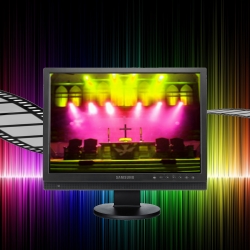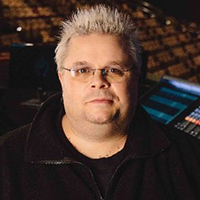Video streaming in the church has become a fairly hot topic. Look around and you can find any number of sources offering opinions on its merits.
While I’ll forego that debate, I will say that through some trial and error, we’ve been able to put together a great streaming product.
Due to the number of inquiries I’ve received about our streaming product, I’ve dared to lay out some particulars about it. As always, keep in mind that the info relayed below is what works best for our particular setup, situation, congregation, and workflow.
We make our fair share of mistakes in the production world, but one thing we try to get right is how much time, effort, and research goes into some of our production systems and processes.
I HIGHLY suggest you maintain your own level of due diligence and never adopt a strategy just because you saw us (or anyone else) do it.
After we got burned on a somewhat complex, web-server situation that was hosted off-site, we knew we needed something simpler and much more user-friendly to handle our streaming. I was watching a live concert event and noticed it had a “Livestream” bug in the corner, so I looked into it (NEVER discount what you can glean from watching live concerts and videos).
Turns out, their system WAS quite simple, could run as a software OR hardware-based system, and could run on one of our own computers. And did I mention cheap? Depending on the level of service we selected, it was a fraction of what we had been paying before. Here’s some nerd-speak about how we put it together:
Basic Info
—Service provider: Livestream
—Output settings: Standard “HD + Medium + Mobile” preset
—Uses an iMac configured with fastest CPU available
—Input interface to iMac: Blackmagic UltraStudio Express
—Video output resolution: 720p59.94 SDI with embedded audio
Source Routing
—The primary stream video feed comes from a general-purpose aux on our main video switcher. This allows us to send separate sources from the switcher to the stream if needed. Example: If we take our video walls to black in the house for a segment or as an effect, we can still route live camera images to the stream to maintain continuity for the viewer.
— This video output is combined with the program audio mix using an SDI audio embedder. Click here to read more on how we put together our live audio mix.
—This video + audio feed then hits a Blackmagic ATEM (1 M/E Production Studio 4K) allowing us to add any additional stream-specific graphics or transitions. Example: Sometimes we use a transition graphic in and out of any host segment that goes to the stream only. Using the ATEM has allowed us to add a “swoosh” sound effect to this wipe that sets it apart a bit from the program mix.
—NOTE: The audio can be further processed by the ATEM if needed, allowing us to add sound effects (as mentioned above), achieve some level of gain control, or mute channels.
—We take this ATEM output to our main video router allowing us to capture the same feed for recording, archiving, and distribution.
—Finally, we send this output from the router to the Livestream iMac computer via the UltraStudio input device.
A few notes about web interface
We created a custom website that embeds the standard player available from Livestream, COTMLive. We use a single “event” in Livestream that is set to end at a date far in the future. This ensures the event ID won’t change, which would require us to frequently update the website with the new embed code. This custom site gives us better control of when the stream is visible, allowing us to hide the stream while we are rehearsing or setting it up for internal use only.
Before you step foot in the stream
All this info is cool and everything but if your service output doesn’t look or sound that great, it won’t matter how much time and effort you put into your stream setup, it still won’t look or sound that great. In fact, it might come across worse. Before you spend too much time on your streaming situation, you may want to spend some time getting your live presentation together. How well does your stage come across on video? Does your mix translate well to a recording? Do you need some audience mics to help communicate the “feel” of your room better to a stream audience. I encourage you to spend as much time as it takes evaluating your specific situation so your stream product can be as good as possible.
You can read and comment on the original article, as well as see updates to the growing and changing system here.
Andrew Stone is the Production Manager and Audio Director at Church on the Move in Tulsa, OK. His 25 years of touring experience have brought a unique, and sometimes unorthodox, perspective to his approach towards production in the church. He has been a key part of changing the culture behind COTM’s live events and he loves sharing his knowledge with other churches. He’s been married for 19 years, rarely wears anything but black, and genuinely loves to rock. You can find him on Twitter (@stone_rocks) or on Seeds, COTM’s free resource site, as a blog contributor.




















